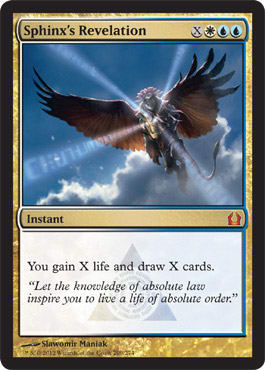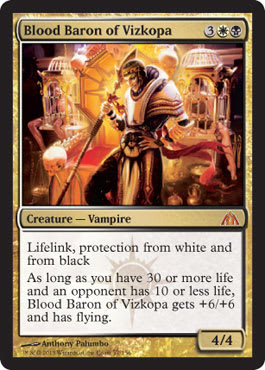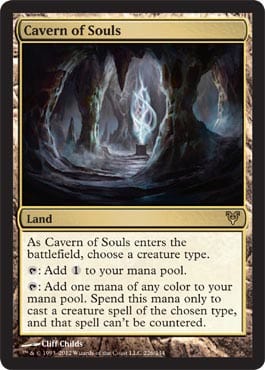As always, there comes that time of year when you have to start looking at your collection moving forward and decide how much Standard means to you in the here and now versus the lost value in holding onto some cards. As with any investment, your collection can grow based on smart decisions and proper preparation for the future of the market. Clearly, Standard prices will drop as we approach rotation, but that does not mean we need to shove everything out the door immediately.
So, there are two lines you can follow here: one player-focused and the other financier-focused. If you are not sure which camp you fall into, you are probably going to be the person to gain the most from this article.
Over the past few years, the trend toward rotation has adapted to both the increasing number of players—not only in Standard, but also in Eternal formats—as well as the more rapidly available stream of information. Players have seen firsthand how much more support there is on the store level, making the larger tournament play less daunting to newer players. This can transition, in many cases, to Grand Prix and Pro Tour Qualifiers, increasing the level of play and, in turn, the cards in demand. This is where the stream of information becomes most apparent in my opinion. Most people would believe the rapid shift of prices is the most relevant piece of information you can watch. In fact, watching decklists at major events is important—not always those at the top tables, but those in the lower seats as well.
Though this all may seem like common sense, it is more relevant that you note the cards that are seen in decks that may have more casual appeal. The competitive community focuses on the Top 8 or Top 16 decklists, and many times, this community dismisses a deck if it does poorly. In many cases, that deck is probably not fit for the event it was taken to, but for the more casual player at Friday Night Magic, that may been something he or she would enjoy playing. With this in mind, keep note of the cards that keep creeping up in casual or fun lists, and watch their prices. Rarely does rotation hurt those cards nearly as much as an equal-value, strictly-Standard card. Though you ideally would still move these cards if they were likely to drop at all, this is not always an option for every player. A reader sent me an e-mail asking what he could do if his area was almost only Standard and he did not want to lose the value of his collection by buy-listing it. This is not something I had ever really considered before, and perhaps some others may have this same issue. After all, I am in this game because it has been a major part of my life and I found a way to monetize my hobby, which is clearly not the case for most people, so I forget that not everyone wants to sell any of their cards. If any of you have any other suggestions or have an area that has similar issues, I would love to hear how you sustain through rotation.
Beyond weathering the storm with long-term holds, if your area is more diverse, you can, of course, attempt to trade into Eternal staples and then back out of them later. The problem many face, though, is balancing how much they can play due to a limited card pool with not losing too much value come rotation. I can only state what I did when I used to play competitively, but I found that I would then focus on one deck, and instead of trading for Eternal staples, I traded for Block cards and sat on extra play sets I thought would go up. This worked twofold for me, as I was able to move them next season very easily—in many cases for a profit—and I was also able to lend out play sets to those who may have not had the new cards. This allowed me to, in return, borrow cards they were not using that weekend so I did not have to stay invested in older cards. This is certainly not something for everyone, but I found it worked for me. Adapting to your area is key for anyone looking to be finance-savvy.
The only other piece of advice I can give on the subject, as I am no longer what I would consider a player, is this: Weigh how much you can play and how much you can earn back in prizes, and see if moving your cards now would turn out to be more if you could play a deck that is cheaper or contains more cards from the current block. It sounds brutal to say you cannot play the deck you want, but if you truly want to make Magic pay for itself, it is hard to not sacrifice sometimes. Standard can be very expensive, and cards can plummet at a moment’s notice. The time each drops is not always certain, but outside of anything with high demand elsewhere, you can expect 20% of the card’s current retail in cash if you wait. If you have the chance to play weekly and can use Magic as the game to fund itself, keeping your deck may not only be viable, but the better option. Once you find this happy median, you can adjust as you gain more experience and playing becomes more viable for making money.
To stray away from the player’s perspective for a moment, it is usually about this time when most financiers quit picking up old Standard unless they are expecting to flip it quickly. The real key for this community is to figure out what will drop and what will hold and then evaluate how far a card can and should drop before adjusting. I am not going to talk about particular cards from this block, as I would like this to be more about theory than just regurgitating a list of cards to pick up.
Reprints that had a high value before entering Standard are a great place to start. These cards usually will continue to see play after they rotate and will be among the quickest to rebound if they even drop. This category, along with the casual cards, makes up a huge portion of what I try to have left, if anything, from Standard.
You also have the newly-printed cards that have quickly adapted to the Eternal formats from release. Some of their prices are mostly controlled by these Eternal formats already if they see no Standard play, meaning they are safe in most cases.
The most difficult category is comprised of the cards that see Standard and Eternal play. If that is the case, you have to decide whether you are looking at an Eternal staple, such as Liliana of the Veil, or a more situational card, like Cavern of Souls. Both are likely to rise in the long term, but you did see a dramatic difference in their price losses after rotation—and again as Liliana rebounded so quickly. Most of this information comes from just watching enough coverage or seeing enough lists to understand what is seeing play and how integral it is to certain decks’ successes.
The choice of where you fall is really up to you. I know players and financiers alike who fall all across the spectrum, and as large as the game has already become, and as large as it could become, we are likely to see more people looking to let the game pay for itself. Diligence is key when it comes to pulling out with minimal loses or even some potential gains. Some people do not care about the value of their collections and prefer to hold on to everything, but as I imagine you are not reading this if you fall into that category, I will leave that approach alone.
I really am curious to hear how people have adapted to their trading environments and what each has found useful in continuing his or her collection. If you do not mind sharing publicly, please post below; otherwise, you can always e-mail or find me on Twitter. Much of what I do now I have learned from watching and listening to others within the community, and I really hope you do not only look for my opinion, but also read and follow up on comments. As always, I will answer any questions I can, but I imagine some will be better answered by people who have similar situations, so I would love to see some more feedback here. I receive a ton of e-mails, and there are some I cannot always get to, but that does not mean I am the only one who can answer it. Some of the better financial minds pop in as well and can probably contribute. As always, thank you for reading, and I hope you weather the storm.
Ryan Bushard


























